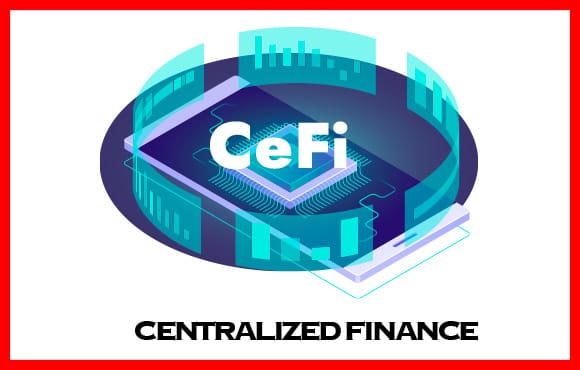Centralized financial services, or CeFi, refers to an exchange, wallet, or other financial services that are centralized and controlled. These services are often referred to as CeFi because they contrast with decentralized finance, or “DeFi,” which refers to the decentralized financial services built on decentralized protocols. A centralized service typically refers to a service that is controlled by a single entity, whether that’s an exchange, wallet, or other financial services. Examples of centralized services include Coinbase, Circle, Gemini, and Binance. A centralized service often has faster transaction times and lower fees than decentralized services. This is because a CeFi platform and centralized services relies on a single point of control rather than a decentralized system.
Features of CeFi
- Instantaneous Transactions
CeFi enables users to make transactions instantly while the use of DeFi often requires a “wait time” to confirm the transaction and be added to the next block on the blockchain. This wait time can take hours and sometimes even days.
- Low Fees
CeFi can process transactions for lower fees than DeFi for multiple reasons, including that there is no mining fee and that higher volume on one centralized server can result in lower processing costs.
- Access and Reliability
CeFi users can access their funds at any time and from any place, as long as they have an internet connection and the appropriate software installed.
- Single Point of Control
Because CeFi is centrally located and controlled, it has a single point of control. This means that the CeFi can be more efficient than DeFi, which relies on multiple parties to complete a transaction.
Applications of CeFi
CeFi is an important platform and in the real world, its applications are increasing day by day. We have mentioned here three of its common examples which are;
- CeFi Exchanges
It allows users to trade digital assets with each other by matching buy and sell orders. Centralized exchanges also process orders as soon as they are placed, rather than waiting, as with decentralized exchanges.
- CeFi Wallets
A wallet is a digital or physical storage unit for cryptocurrencies. Certain wallets are more secure than others, but most wallets are a type of centralized service.
- CeFi Payment Processors
In a centralized payment system, a company acts as a middleman to process payments and distribute funds to each party involved in the transaction.
CeFi vs. DeFi: Is It better than DeFi?
They are two different types of financial services and protocols. CeFi refers to centralized financial services that rely on a single point of control. DeFi refers to decentralized financial services that rely on a decentralized network. A centralized service relies on a single point of control, either by a company or a single individual. A decentralized service relies on a decentralized network, where the control of an operation is spread out among many different people.
Both the CeFi and Defi have their own use cases for their core properties and working principles. Similarly, both centralized and decentralized finances have some pros and cons that must be considered before dwelling on them.
You may also learn: Crypto Staking – Everything You Need to Know
The Future
The world is changing at a rapid pace, especially in international finance. New and innovative financial services are needed in the world of cryptocurrency and blockchain technology. With more people turning to cryptocurrencies as a form of payment and store of value and higher volumes of transactions every day, the need for highly-reliable and accessible payment services has become more apparent. A centralized service can be more accessible, reliable, and efficient than a decentralized service. However, one of the biggest drawbacks is its centralization, leading to potential issues and security breaches. So, the future of CeFi will depend on how these companies can stay secure and keep user data private and secure.
Final Verdict
At present, CeFi is playing a critical role in the financial world. It provides users a way to get into the space without dealing with the DeFi complexities for beginners. As the demand for CeFi grows, we can expect to see more centralized financial services become available. But still, these services will rely on new technologies, such as blockchain, to minimize security breaches and data leaks.

